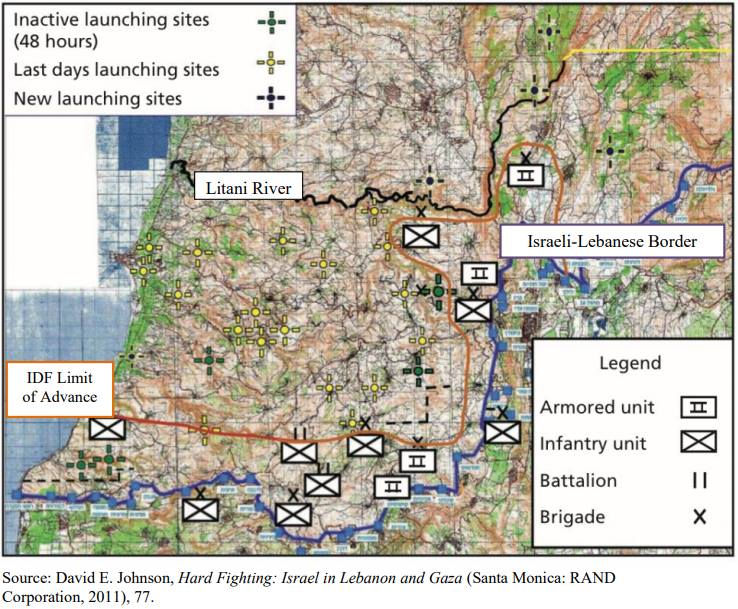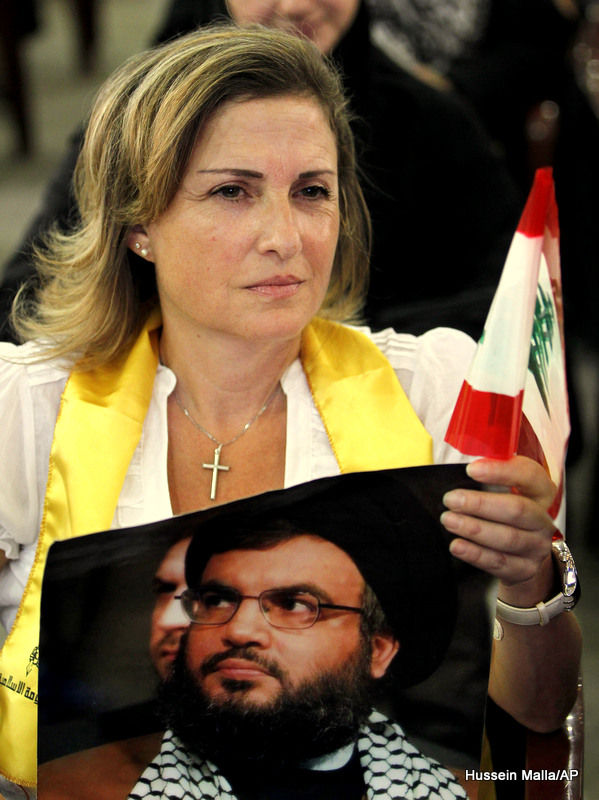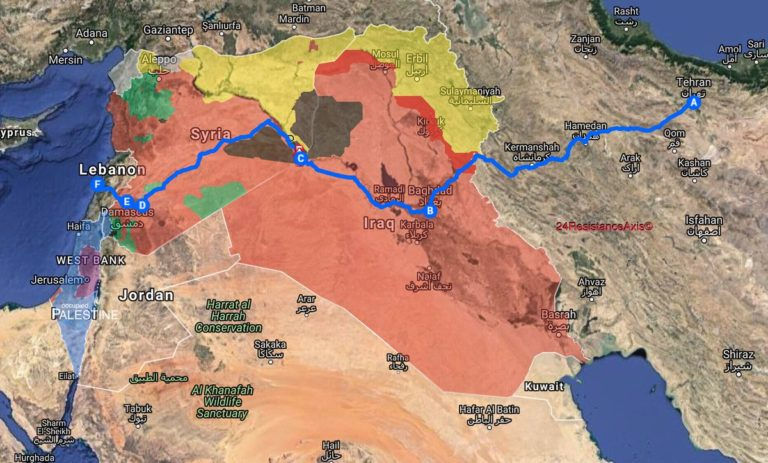Hezbollah - A History
- Saed Teymuri
- Aug 17, 2018
- 9 min read

Hezbollah During the 1980s
The ideologues of the Zionist Entity have long dreamed of establishing a "Greater Israel" stretching from the Nile to the Euphrates. Such a vast area encompasses not only Egypt but also Lebanon, Jordan, Syria, Iraq, and of course Palestine. After "Israel" defeated the Arabs in 1948 and 1967, waves of Palestinians took refuge in South Lebanon.
In 1975, what many call the "Lebanese Civil War" began, with Pan-Arabist Lebanese left, allied to the PLO (the generation of 1948 an 1967) fighting against the Mussolini-inspired fascist Phalange forces. Involved in the war was a predominantly Shiite Party, founded by Musa Sadr, and commanded by an Iranian physicist-turned-guerrilla named Mostafa Chamran (who by the way, got his guerrilla training in Egypt).
Fearing that the chaos of the war and the rise of the pro-Palestinian far left in Lebanon would create the vacuum for "Israel" to take over Lebanon, Syria first sought to create a peace deal between the right wing forces (e.g. Phalange) and the left. These efforts failed, and so Syria stationed its troops, in a fight against the leftist forces in 1976.
In 1978, "Israel" invades Lebanon. In April of that year, the Phalange, which was initially fighting on Syria's side, joined "Israel." Syria then turned against the Lebanese Phalange and began to support the "moderate" forces among the Palestinians, so to drive out the "Israelis" and the Phalangists.
Soon after, "Israelis" had to temporarily retreat. According to several sources, in 1982, the Abu Nidal group - a militant group hostile to the PLO - allegedly with the backing of Iraqi intelligence is said to have assassinated Shlomo Argov, the "Israeli" ambassador to London. The goal of the Iraqi intel operation is said to have been to give "Israel" the excuse to invade Lebanon; as such, "Israel" gaining a foothold in Lebanon would help Saddam contain his chief rival and Syrian leader Hafez Al-Assad, from the Western front. Whether or not this piece of information is propaganda or real history, it is worth noting that this piece of information is based on declassified CIA sources, Al-Jazeera, and Western media outlets such as The Guardian.
At around that time, in Iran, the Shiite Islamists led by Ayataollah Khomeini had consolidated power domestically and the Iranian Revolutionary Guard Corps (IRGC), Iran's main military apparatus had been established with the help of a former Iranian-Lebanese Amal Party guerrilla Mostafa Chamran.
Syria had established its hold over the Beqaa Valley in Lebanon. During the early 1980s, the IRGC sent 5,000 troops to the Beqaa Valley, with the permission of the Syrians. Syrian leadership was apparently worried that Iran 's presence would provoke another fascist aggression by "Israel." Tehran and Damscus however did agree that a strong, unified, and local anti-Zionist force has to be set up. In exchange for the presence of Iranian troops in Lebanon, Iran would give nine million tons of oil to Syria every year.
Elias Sarkis, the Maronite President of Lebanon formed the Lebanese National Salvation Committee, incorporating Amal leader Nabi Berri into the government in collaboration with the Phalangists. Upset that Amal had betrayed the "Shiite cause," the Party's second in command Hussain Musawi split from Amal. Several of the Amal forces joined the IRGC in Lebanon's Beqaa Valley. From then on, several more Shiites were incorporated into the formation of a loose multi-tendency coalition of Shiite Islamists. The name of this new organization was Hezbollah - meaning The Party of God.
Initially, Hezbollah attacked military barracks and seized them for establishing its bases in the Ba'albek Region (similar to the tactics of Chairman Mao).
During the 1980s, Hezbollah gets accused of carrying out several plane operations: the 1985 hijacking of TWA Plane for the release of 700 Shiites from "Israeli" prisons. There were also the 1984 and 1988 plane hijackings, all of which Hezbollah is said to have not taken responsibility for.
Hezbollah was also accused of suicide car bombings against "Israeli" and American units - operations which the organization apparently denied as well.
In order to attract the support of the populace, Hezbollah would later provide social services for the Lebanese people in the South, providing them with education, healthcare, payment for the reconstruction of homes, and compensations for the damages done. This would help boost the popularity of Hezbollah among the Shias and the respect of some Christians and Sunnis. Hezbollah's recruitment would increase.
For the next decades Hezbollah would emerge as the strongest anti-Zionist opposition force in Lebanon.

Hezbollah During the Period 1990-2000
In 1982, Israel invaded Lebanon. The result was the formation of the Hezbollah and several leftist and Palestinian resistance coalitions. Over time, the power of the Hezbollah began to increase.
By late 1988, Hezbollah and Syria were able to resolve their differences during the Camp War and by 1989, the Ta'if Accords were signed. This agreement put an end to the Lebanese Civil War, entrenched the hold of Syria in Lebanon, especially in the North, and gave Hezbollah the room to fight against the Zionist Entity and its fascist allies in the South.
Since the 1990s, Hezbollah became pretty much the number one force fighting against "Israel." With the help of the Iranians, the self-described "Party of God" provided education, healthcare, housing, reconstruction, gas, electricity, sewage system, and compensation for war damages and the fallen. Hezbollah. In 1992 alone, Hezbollah provided 2.9 million Dollars for approximately 20,000 poor families. The social services provided by Hezbollah dramatically boosted the Party's image in the eyes of the public.
Furthermore during the 1990s, Hezbollah - while keeping its Khomeinist ideology - sought to avoid appearing like a rigidly fundamentalist political party in Lebanon. The Party established the "Lebanese Resistance Brigade," a non-denominational Lebanese paramilitary group that sought to incorporate Sunni Muslims, Christians, Druze, and non-practicing Shi'as who held anti-Zionist politics into a united front against Zionist terror.
To foster its image, and report on the daily Zionist terror, Hezbollah established the Al-Ahed Newspaper, Al-Nour Radio Station, and most famously the Al-Manar TV Station. In 1996, Hezbollah also started a Hebrew language program meant to move the "Israelis" against their regime.
The Hezbollah media would constantly present the Zionist destruction of Lebanon and Hezbollah's reconstruction of Lebanon and resistance against the Zionist aggressors in response.
During the 1990s, Hezbollah used the roadside bomb to target the "Israeli" soldiers. The roadside bomb, though relatively simple, was the most effective weapons used by Hezbollah. In 1999 alone, Hezbollah's roadside bomb was the cause of the deaths of 75% of "Israeli" forces in Lebanon.
The roadside bomb also had a strong psychological effect, because it could be disguised by other materials. Any rock in the street could potentially be a roadside bomb. This weapon struck fear in the hearts of the Zionist terrorists.
During the 1980s, the "Israeli" forces felt safe in their Merkava Tanks. However, with Iranian assistance, Hezbollah was able to obtain anti-tank missiles in its arsenal. As a result, no "Israeli" tank driver felt safe; the tanks were easy targets for Hezbollah, another boost of morale for the Lebanese.
As the death toll of "Israeli" troops increased up to almost 900, more and more "Israelis" began to turn against the war. Prior to 1997, 60% of "Israelis" supported the war; as the death toll rose, debates emerged and the politicians were pressured to end the war.
Ehud Barak ran on the platform of getting "Israel" out of the war. On May 25, 2000, "Israeli" troops withdrew from the Lebanese territory. That day would be remembered as Lebanon's Liberation Day, celebrated by the majority of the Lebanese, and mourned by the Phalange-ISIS sympathizers. 25 years of war in Lebanon finally ended on Liberation Day.
The Second Lebanon War - July 2006
The first Lebanon War was involved the overlap of the 1975-1990 Lebanese Civil War and the 1982-2000 "Israeli"-Fascist occupation of South Lebanon. Until the late 1980s, the bulk of the Lebanese anti-imperialist movement was formed by the leftist and PLO forces. With the decline of the USSR, the Lebanese left also fell apart, giving rise to "Iran-backed" Hezbollah.
From 1990 to 2000, Hezbollah carried out operations against the "Israeli" troops and their fascist allies. The main fascist allies of the "Israelis" were the "South Lebanon Army" led by Antoine Lahad. In May 25, 2000, the "Israeli" troops withdrew from South Lebanon. This became known as "Liberation Day."
In 2003, NATO invaded Iraq. Iran was in the list of enemies that Washington was planning to take out, before Russia and China would revive their power. Yet, Iran was able to use the US invasion of Iraq *against* US interests, by providing support for Sadrist guerrillas that constantly bombed US bases throughout Iraq.
Iran's influence now stretched through Iraq, Syria, Lebanon and Palestine in an alliance called "The Resistance Axis." The obstacle to the US invasion of Iran was Iran's geopolitical deterrent against the US invasion. Iran "had" Hezbollah. Should the US invade Iran, Hezbollah would attack "Israel" - Washington's top ally in the region. Therefore, USA's strategy was to first get "Israel" to take out Hezbollah, and then allow NATO to go for Iran.
Therefore, in July 2006, "Israeli" troops mobilized towards Lebanon once again.
Hezbollah had developed a very impressive network of bunkers and arsenal of weapons readily available. The ammunition, food, medical services, etc. were all available in the bunkers, thereby allowing Hezbollah to sustain its fire against the Zionist invaders while protecting the Hezbollah fighters inside their bunkers. So effective were these bunkers that even after dropping 2,500 precision-guided munitions in the first three days of the war, only 7% of Hezbollah's fighting capability had been damaged, in spite of the bloody destruction brought about across Lebanon.
Nevertheless from July 13 to July 31 - the first phase of the Second Lebanon War - Israel did have severe strikes against Hezbollah forces. In a matter of 34 minutes, in Operation Specific Gravity, the "Israeli" Airforce destroyed more than 50 long range rockets, along with other Hezbollah infrastructure.
As with the 1990s, in 2006, Hezbollah used low-precision Katyusha rockets launched into "Israel." 4,000 Katyusha rockets went into "Israel" from bases 20 km close to the "Israeli" border.
The fighters also developed a strong anti-Zionist media apparatus, constantly showing the rubble created by the Zionist aggressors, and Hezbollah's resistance against the Zionists.
From July 31 to August 11, "Israel" launched Operation Change of Direction 8, seeking to create a "Security Zone," kilometers along the "Israeli"-Lebanese Border. Eight brigades from the "Israeli" Occupation Forces (IOF) were to execute this operation. Hezbollah responded with continuing the Katyusha Rockets, using the bunkers, and weaponry to attrite "Israeli" soldiers.
On August 12, the last phase of the "Israeli" operations began. As shown in the image, "Israel" wanted to push towards the Litani River in Lebanon. Hezbollah forces ambushed the "Israeli" troops.
"Israel" failed to achieve its objectives. On August 14, a UN ceasefire was established. "Israel" withdrew from Lebanon once again, signalling defeat.

Hezbollah emerged victorious. "The Party of God" was able to recruit thousands of volunteers not only from Lebanon but all the way from Afghanistan, Iraq, etc. The polls showed that Christians and Sunnis agreed that Hezbollah was the protector of Lebanon. Hezbollah leader Hassan Nasrallah's popularity rose so much that according to Al-Jazeera journalist Mehdi Hassan, Sunni Arab citizens in the Gulf Arab States began naming their children after the Hezbollah leader. Nasrallah became a top icon among the anti-Zionists of the region.
Hezbollah After 2006
After the July 2006 War, also known as the Second Lebanon War, with the emergence of Hezbollah as the victorious over the Zionist aggressors, Hezbollah's popularity grew dramatically in the region. Hezbollah received large donations from the Lebanese people, thus gaining the ability to provide social services for Lebanon's poor. Many Christians joined the Shiite Islamist Party. With the funds it received, it was able to pay for the damages and reconstruction efforts. To foster its image, it also partially financed the reconstruction of Beirut's only Synagogue in 2009, which ironically was destroyed by "Israel" in 1982!
The Party also grew in numbers, with numerous volunteers throughout the Middle East region moving to join Hezbollah. Whereas up until 2006 Hezbollah's Operations involved non-conventional and asymmetric warfare, after 2006, Hezbollah became a hybrid army, with characteristics of a conventional army, but one capable of easily converting back to guerrilla mode.

In 2008, Hezbollah's top military chief Imad Mughniyeh was assassinated in a car bomb in Damascus, the perpetrators being Mossad and CIA. Mughniyeh planned most of Hezbollah's operations, from the alleged plane hijacking operations in the 1980s, to the fight against the Zionists in the 1990s and 2006. The death of Mughniyeh was a major loss for the Party.
In 2011, Hezbollah turned against Libya as led by Qadhafi. What caused Hezbollah to turn against Qadhafi? We cannot know for certain; however, the answer to this question *may* be found in Sudan. North Sudan had and has very good relations with Iran and Hezbollah. Based on US imperialist sources, North Sudan was one of the channels through which Iran transferred funds for Hezbollah since 1993. On the other hand, based on reports by Reuters, Libya supported the separatist movement in South Sudan, thus standing against the North Sudan government. Clearly, there was a clash of interests here, which is what led to Hezbollah officially condemning the Libyan State (whereas Syria sided with the Libyan government).
Hezbollah did, however, go into Syria in 2011 to fight against US-backed terrorism. Hezbollah supported the government of Bashar Al-Assad against the Al-Qa'ida militants. The terrorist "revolution" in Syria was backed by "Israel" and the United States with the goal of cutting off Iran's track for funding Hezbollah. By eliminating Syria, the Iran-Hezbollah link would have been "cut off," Hezbollah would have been isolated, "Israel" could take out Hezbollah more easily thereby taking out Iran's only geopolitical deterrent against a US invasion; and Washington could more easily step into Iran, with the goal of containing China from the west, and Russia from the south. Washington's efforts for toppling the Syrian government failed when the Russian government in 2015 stepped in, in alliance with Iran and Hezbollah, to 'protect' the Syrian Arab Republic.
Hezbollah has become a very battle-tested army due to its involvement in these wars, and continues to pose as a major force against the US imperialists and Zionists in the Levant Region.


Comments